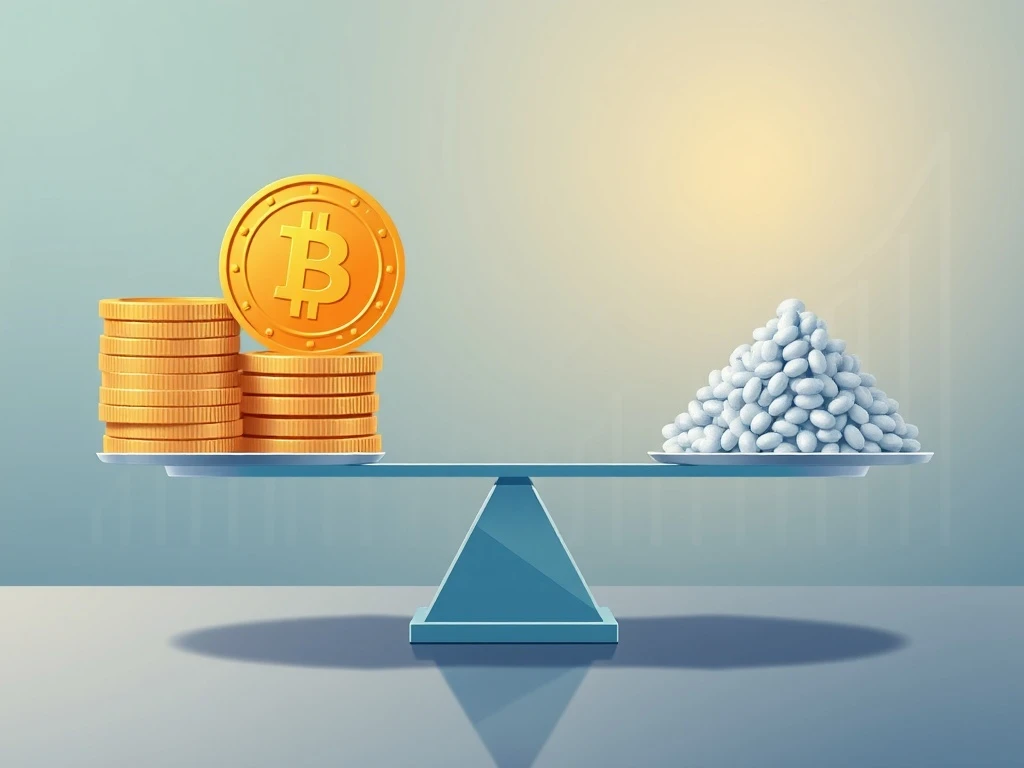In the dynamic world of cryptocurrency, every decision impacts your bottom line. Traders and investors alike constantly seek advantages. While market movements grab headlines, a less visible but equally crucial factor quietly shapes your returns: **low trading fees**. These often-overlooked costs can profoundly influence your overall profitability. Understanding and minimizing them becomes essential for anyone serious about maximizing their crypto gains. Ultimately, smart fee management directly translates into more capital in your pocket.
Understanding Crypto Trading Fees: The Foundation of Low Trading Fees
Cryptocurrency exchanges apply various fee structures. Most centralized platforms use a ‘maker-taker’ model. This differs significantly from traditional U.S. equity markets. In crypto, both sides of a trade typically incur a charge. However, understanding the nuances of these fees is vital for achieving **low trading fees**.
- Maker Fees: These apply when you place a limit order. Your order waits on the order book. By adding liquidity, you become a ‘maker’. Maker fees are generally lower.
- Taker Fees: These occur when you place a market order. You ‘take’ liquidity from the order book. Taker fees are usually higher.
Beyond spot trading, futures and perpetual contracts carry their own fee schedules. Futures fees might seem lower, often ranging from 0.02% to 0.06%. Nevertheless, leverage amplifies your traded volume. Consequently, the total fees paid can skyrocket. Some exchanges also include funding rates or settlement costs. These are not fixed percentages. They shift based on market conditions. Therefore, they can affect profitability in ways not always obvious at execution. A thorough understanding of these models is paramount before deciding on any trading strategy.
How Low Trading Fees Transform Your Profitability
Trading fees are more than just a line item on a summary. They fundamentally alter the framework of your trading strategy. Once you enter a position, the asset must not only perform but also cover the cost of participation. For instance, if a platform charges 0.25% per side, your asset needs to move by at least 0.5% just to break even. This margin increases in volatile markets. Here, execution might not be precise.
The more frequently a trader enters and exits positions, the greater impact these figures have. Short-term traders are particularly exposed. When movement targets are tight, often a fraction of a percent, fee thresholds can easily overlap with expected returns. A technically viable setup might, in real terms, offer no net outcome after costs. This challenge isn’t exclusive to intraday activity. Swing positions involving frequent reallocation, or systems built on multiple small gains, also feel this pressure. The core strategy might hold. However, the output begins to deviate from expectations. This deviation occurs not because of market direction, but because of how often the system resets due to accumulated fees. Consequently, prioritizing **low trading fees** becomes a strategic imperative.
Strategies for Securing Low Trading Fees
Minimizing fees doesn’t require a complete overhaul of your trading style. Instead, you can adopt several smart approaches. These methods help you achieve **low trading fees** without compromising your core strategy. By implementing these tactics, you retain more of your hard-earned capital.
1. Optimize Your Order Type
This is perhaps the easiest adjustment. In most cases, maker fees are significantly lower than taker fees. This difference is especially pronounced in futures trading. To avoid paying more, always prioritize maker orders. This approach naturally encourages better trade setups. Rather than chasing impulsive trades, wait for the price to reach your desired entry level. This makes your execution more disciplined. Furthermore, it helps you avoid unnecessary taker fees. Therefore, consciously choosing limit orders can substantially reduce your overall trading costs.
2. Choose Your Exchange Wisely for Low Trading Fees
There is no universal fee standard across crypto exchanges. Each platform sets its own model. Some exchanges charge exceptionally high fees. Others qualify as the lowest-fees crypto exchanges, offering leaner pricing. For example, spot fees can be as low as 0.05%. Selecting the right platform depends heavily on your specific trading style. Some exchanges excel for futures traders, providing lower costs on contracts and funding rates. Researching and comparing different platforms is crucial. Look for exchanges known for their commitment to **low trading fees** and transparent structures.
3. Leverage Exchange Incentives
Many platforms offer attractive discounts for holding their native token. In some instances, these discounts can reach up to 50%. This presents a dual benefit. You gain from significantly lower trading costs. Additionally, if the token appreciates in value, you might also profit from capital growth. Consider this a strategic investment. However, always assess the risks associated with holding native tokens. While they offer a path to **low trading fees**, their value can fluctuate. Therefore, balance the fee savings with potential market volatility.
Beyond Fees: Other Factors for Maximizing Crypto Profits
While securing **low trading fees** is paramount, other factors also contribute to maximizing your crypto profits. A holistic approach considers these elements alongside fee management. For example, exchange security is non-negotiable. Choose platforms with robust security measures to protect your assets. Liquidity also plays a critical role. High liquidity ensures faster order execution and tighter spreads, further reducing implicit costs. Furthermore, access to advanced trading tools and analytics can significantly enhance your decision-making. These tools help identify profitable opportunities and manage risks more effectively. Finally, continuous learning about market trends and new strategies empowers you to adapt. Combining smart fee management with these broader considerations truly optimizes your trading performance.
Final Thoughts on Low Trading Fees
Ultimately, **low trading fees** matter immensely. They affect far more than just the immediate trade. From establishing your break-even thresholds to influencing your capital rotation, fees shape how your entire strategy performs over time. What appears profitable in theory often delivers different results once these cost layers are applied. This difference accumulates, slowly but consistently. Effective fee management does not demand a complicated system or constant adjustments. It simply requires awareness. It involves choosing efficient execution paths. Moreover, it means utilizing platforms that do not penalize every single move you make. In today’s competitive cryptocurrency markets, prioritizing **low trading fees** is a powerful way to maximize your crypto profits. You achieve this not by chasing higher returns, but by simply retaining more of what you have already earned. Make fee awareness a cornerstone of your trading approach.
Frequently Asked Questions (FAQs)
Q1: What are the main types of crypto trading fees?
The primary types are maker fees and taker fees. Maker fees apply when you add liquidity with limit orders, while taker fees apply when you remove liquidity with market orders. Additionally, futures and perpetual contracts may have funding rates and settlement costs.
Q2: How do low trading fees directly impact my profit?
Low trading fees reduce the cost of each transaction. This means your asset needs to move less to cover costs and reach profitability. Over many trades, these small savings compound significantly, directly increasing your net profit.
Q3: Is it always better to use limit orders to get low trading fees?
Generally, yes. Limit orders classify you as a ‘maker,’ which typically incurs lower fees than ‘taker’ orders (market orders). This strategy not only saves on fees but also encourages more disciplined entry points.
Q4: Can holding an exchange’s native token really reduce my fees?
Absolutely. Many cryptocurrency exchanges offer substantial discounts on trading fees, sometimes up to 50%, for users who hold a certain amount of their native platform token. This can be a very effective way to achieve lower trading fees.
Q5: Are low trading fees the only factor to consider when choosing an exchange?
While crucial, low trading fees are not the only factor. You should also consider an exchange’s security, liquidity, range of available assets, user interface, and customer support. A balanced approach ensures a safe and efficient trading experience.
























